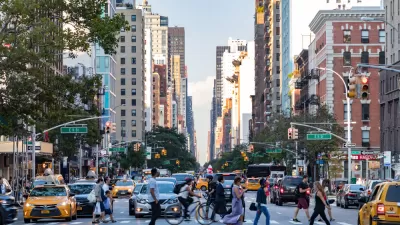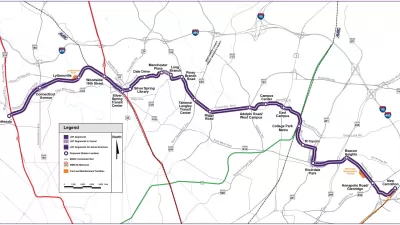One blogger makes the case for walkable urbanism, in the context of the social and physical well-being of adolescents specifically.
"The subdivision I grew up in had a couple other kids that were in my age range. I was lucky. Outside of the subdivision, there was nothing else in walking distance. The roads to get there had no shoulder, either. As much as I liked the other guys in the subdivision, they weren't my best friends. If I wanted to see friends from school, my parents had to drive. Once again, I was lucky that my parents had time for frequent trips to friends' houses, as long as I gave them ample notice and they talked to my friends' parents. However, that's a lot of big "ifs." It's silly that a parent must devote time, energy, and money from gasoline, insurance and car depreciation every time two kids want to play video games or kick a soccer ball together.
A pick-up soccer, football, or basketball game was even more complicated. We couldn't just go down to the local field and play with whatever kids were hanging around looking for a game. Instead, we had to call guys who lived in distant subdivisions and talk to their parents about car transportation. If anyone's parents weren't around, or were too busy to take an hour out of their day to drive their child to a pick-up football game, we couldn't play. Since organizing required effort, we'd only call our friends. This deprived us and other adolescents of a major social lesson: getting along with people other than your friends."
FULL STORY: It takes a village: why walkable urbanism is good for adolescents

Maui's Vacation Rental Debate Turns Ugly
Verbal attacks, misinformation campaigns and fistfights plague a high-stakes debate to convert thousands of vacation rentals into long-term housing.

Planetizen Federal Action Tracker
A weekly monitor of how Trump’s orders and actions are impacting planners and planning in America.

In Urban Planning, AI Prompting Could be the New Design Thinking
Creativity has long been key to great urban design. What if we see AI as our new creative partner?

King County Supportive Housing Program Offers Hope for Unhoused Residents
The county is taking a ‘Housing First’ approach that prioritizes getting people into housing, then offering wraparound supportive services.

Researchers Use AI to Get Clearer Picture of US Housing
Analysts are using artificial intelligence to supercharge their research by allowing them to comb through data faster. Though these AI tools can be error prone, they save time and housing researchers are optimistic about the future.

Making Shared Micromobility More Inclusive
Cities and shared mobility system operators can do more to include people with disabilities in planning and operations, per a new report.
Urban Design for Planners 1: Software Tools
This six-course series explores essential urban design concepts using open source software and equips planners with the tools they need to participate fully in the urban design process.
Planning for Universal Design
Learn the tools for implementing Universal Design in planning regulations.
planning NEXT
Appalachian Highlands Housing Partners
Mpact (founded as Rail~Volution)
City of Camden Redevelopment Agency
City of Astoria
City of Portland
City of Laramie





























